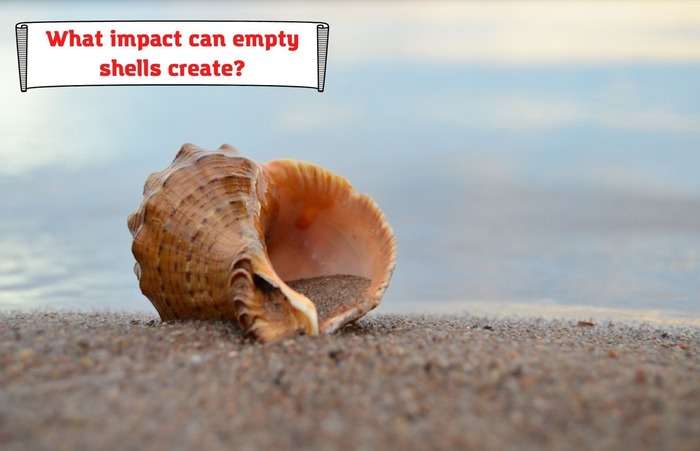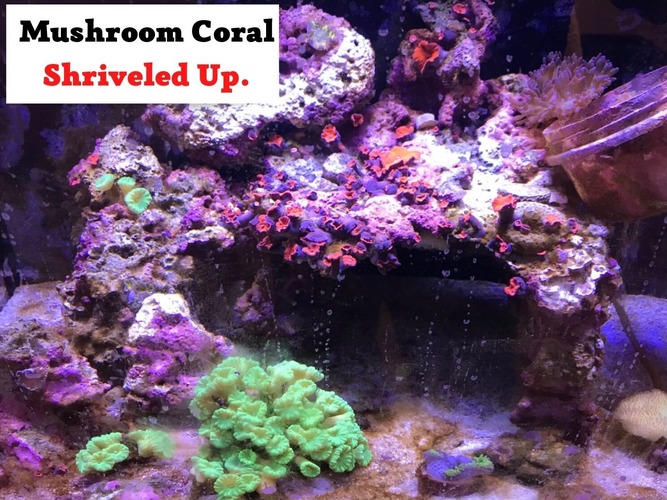
Empty snail shells in your aquarium are enough of a mystery you can expect in your tank. So, it is better to address the problems you can expect from the snail shells lying in your aquarium. Isn’t it? To be honest, the snail shells in your tank aren’t a big deal, but they can be problematic in certain situations. This is why it is essential to address this issue in detail and guide you with the optimal steps to take when you find empty snail shells.
Let’s have a look at the outline:
- What impact can empty shells create?
- Collection of food particles, poop, and other particles
- Source of vital minerals for snails
- Spike in ammonia, nitrates, and phosphates
- Movement of pH to the acidic side
- What should you do when you see the snail shells?
- Regular testing of the water levels
- Keep an eye on the other snails
- Should you remove snail shells?
- When can a snail shell be a real problem?
- How to remove snail shells from the aquarium?
- What to do with removed snail shells?
What impact can empty shells create?

The impact of the empty snail shells will usually be visible or detectable when you have too many of these abandoned shells in your tank. In the case of one or two shells, you shouldn’t even worry about it. But if you have a lot of them, then below are a few implications you can expect.
Collection of food particles, poop, and other particles
Empty shells can collect different particles in your tank and store them for a long time. So, this could be one of the biggest problem you can expect from the empty shells.
The shells filled with waste material will not only look aesthetically bad for your aquarium but will also change the levels of different minerals in the water, impacting the overall quality.
Source of vital minerals for snails
One of the other impacts that the snail shells can create on your aquarium is that they can prove to be a source of minerals for the snails. Once the shell dissolves, it brings calcium and other healthy nutrients for the growth of the remaining snails. Basically, it is a part of the cycle: the snail shell gives rise to a beneficial environment for the other snails.
Spike in ammonia, nitrates, and phosphates
The presence of the waste material in the shell, when it stays in there for a long time, will be attacked by the resident bacteria. In return, ammonia will be released. It means that your snail shells can prove to be another source of ammonia in your tank (we aren’t even counting the other ammonia sources). So, you’ll have to take adequate measures to remove this extra ammonia.
Movement of pH to the acidic side
The pH levels of your water are likely to move towards the acidic side. The slight acidity on the water is often healthy for the fish and the other organisms in your tank. So, by keeping the snail shells within the water, you can manage an excellent environment for your aquatic organisms in the fish tank.
What should you do when you see the snail shells?

As the snail shells are expected to create the changes as mentioned earlier in your tank and water levels, so you must perform the following tasks to keep an eye on your aquarium:
Regular testing of the water levels
As the extra snail shells in an aquarium can cause ammonia spikes, which will require you to test the water levels frequently. It ensures that you can capture any sudden increase of ammonia in the water and treat it accordingly.
One of the other more uncomplicated measures to manage ammonia is to include a new creature, just like aquatic plants, that can help in the automatic reduction of ammonia from equilibrium.
But adding anything new will require you to evaluate your closed ecosystem once more, so there is nothing that creates an imbalance in your aquarium.
Keep an eye on the other snails
One of the other things that can be problematic in this scenario is if you find more than one snail shell in your aquarium, it should be an early warning sign. However, you could be looking for a way to lessen your snail population, which of your animals is the real aggressive type attacking your snails. So, it is better to keep a close eye.
Besides, do not think your excessive snail population is on the target. If any of the creatures has gone too aggressive, it might be eating the fish. So, be careful.
Should you remove snail shells?
In most cases, snail shells aren’t problematic for your water quality or the other organisms living in your tanks. Instead, they can provide a source of food or minerals for your tank.
But what if you have too many of them or the other creatures in your tank are sensitive to changes in water pH? Then removing the snail shells will be the only option you have.
When can a snail shell be a real problem?
If your snail is naturally dead and there are no other animals in your fish tank to treat it as food, then it will start rotting within the aquarium. This is the point when your tank ammonia levels can go well beyond the imagination.
Besides, you’ll also feel the harsh rotten smell in your tank, thus making things difficult for you and the other tank beings. However, such a problem usually does not exist as the soft tissues that attach the shell with the snail dissolve quickly after the snail’s death, and the snail often becomes the food of the other fish in the water. So, mostly, you’ll find a thoroughly clean snail shell lying at the bottom of the water.
How to remove snail shells from the aquarium?
One of the best ways to remove them is to use a siphon for vacuuming the aquarium bed. You can either opt for it during the water changes or go for it between the water-changing cycles. Removing them between the formal water changes can help maintain overall cleanliness and water quality. It is totally up to you.
Another method of taking the shells out is through a small net. It is a simple but time consuming process. However, you can play around while keeping your water levels intact.
How often should I take out the shells?
Some people suggest you take out the shells as soon as you notice them, while the others might keep them for weeks.
It depends on the quantity and the condition of the shells. If snails are attached to them, you should probably take it out the time you see it, as keeping it there for long will create more problems. But either wear some gloves or use some tool to pick such a shell up because your hands will smell very bad as well, and we are sure you will not like it.
What to do with removed snail shells?
If you have enough of these shells in your tank and have decided to remove them, one of the best steps you can take is to make them part of the compost and spread it in your lawn. These shells have calcium carbonate or lime in them, which is an active neutralizing agent and can help grow different plants.
Summing up
The empty snail shells in your tank are a good source of providing calcium and other minerals for your aquarium animals, particularly the other snails. However, excess of everything is bad. So, if you have too many of these shells in your aquarium, you’ll have to remove them. In this case, they will be the cause of keeping the extra food particles and other additional material inside them, along with the spikes in the tank’s ammonia level. These are a few things that you wouldn’t want in your tank.
- Pleco Not Eating. Main Reasons Your Pleco Is Starving - February 21, 2022
- Foxface Fish Sting: Any Danger? And What To Do To Relieve Pain? - February 20, 2022
- White Stuff Coming Out Of Snail – Dangerous? Should You Worry About It? - February 19, 2022




